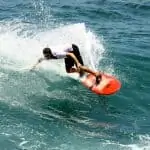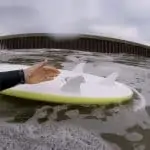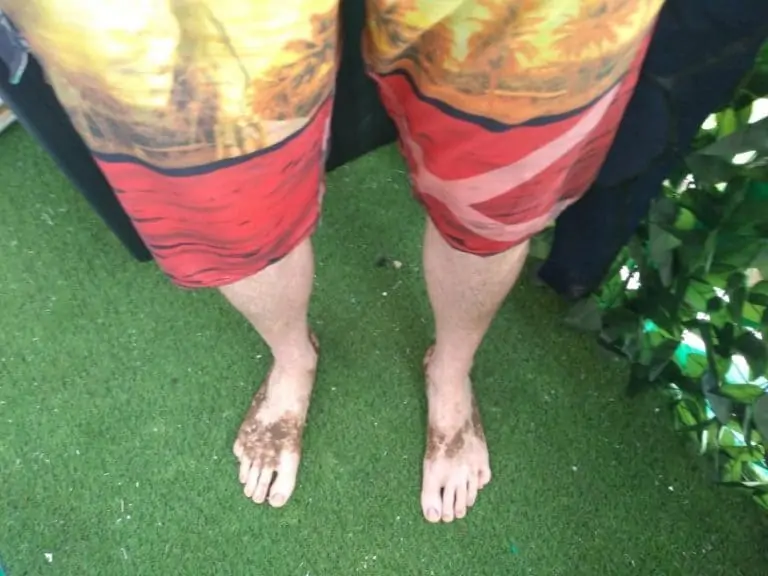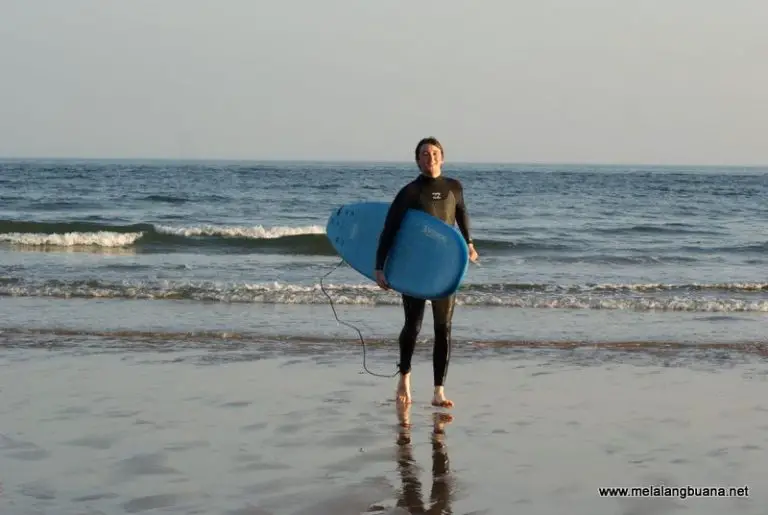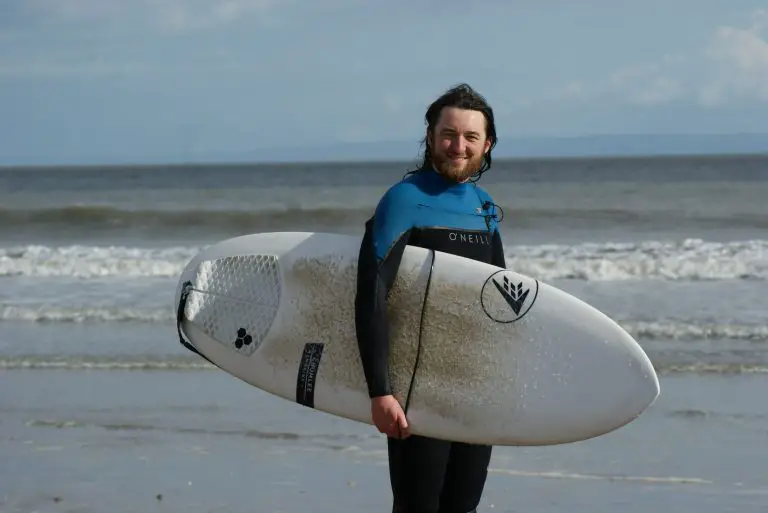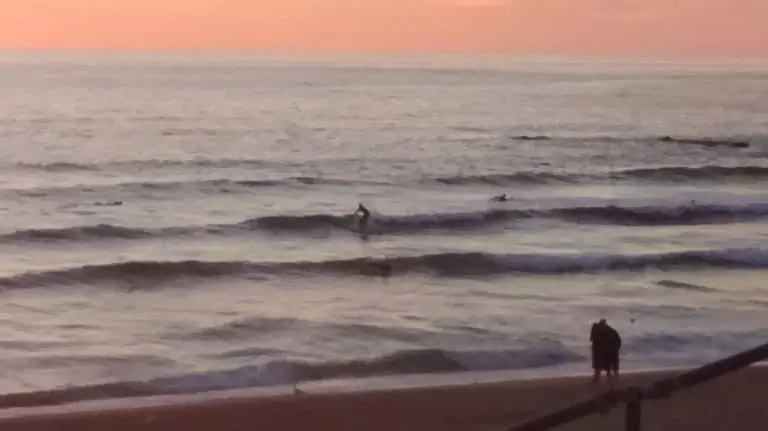Is Bodyboarding Easier than Surfing? (Yes for Most + Why)
When looking to start learning to ride waves, most people will consider either surfing or bodyboarding as a starting point.
This is because surfing is the most popular option, while bodyboarding is something that many people have seen or tried when they are at the beach.
So, is bodyboarding easier than surfing? Yes, bodyboarding is easier than surfing because you don’t need to stand up, making it a good starting point for young learner surfers, but remember that advanced bodyboarding can also be very hard, as we’ll look at in more detail below.
Right, with that said, let’s look at both learning to bodyboard and learning to surf in more detail below to help you see the key differences in the two.
Why Many People Think Bodyboarding is Easier to Learn than Surfing
The general consensus is that bodyboarding is easier to learn than surfing for a few key reasons, namely:
- Bodyboards are easier to paddle than surfboards
- Riding waves comes more naturally on a bodyboard
- Bodyboarders lie down to ride waves
Let’s look at each point in a bit more detail below.
Paddling
To start off with, paddling a bodyboard is a bit easier than paddling on a surfboard. This is because a bodyboard is smaller and allows you to have your legs in the water at all times.
With a surfboard, on the other hand, you have to keep your balance and stay on the board at all times, with only your hands for paddling being the part that goes into the water when paddling.
Because of this design, it’s harder to fall off a bodyboard when paddling and most people can learn to paddle on them within a few sessions. With surfing, it can take a good few months for riders to learn to paddle and stay on a board properly so there’s definitely a big difference there.
To begin with, you might only stay in the shallows, so paddling a bodyboard should be fine. However, if you do want to go further out into the surf, you will need to get some bodyboard fins, or flippers, as these will let you paddle faster and help you catch many more waves.
The only catch here is that it takes a little while to get used to paddling with fins as you need to kick your legs in a more specific way, a bit like a frog.
I know that when I was younger learning to bodyboard (before I started surfing), I found that it took me a while to learn to paddle with bodyboard fins on, so don’t think that you’ll be able to master bodyboarding in a few weeks!
And remember, if you can’t paddle a board properly, you can’t catch waves!
Mastering the Take-off
So, once you have managed to learn to paddle on either a surfboard or a bodyboard, you then need to catch waves and try to ride them.
This is where the biggest difference comes between learning to surf or bodyboard: the take-off.
The take-off is at the start of when the wave picks you up and actually pushes you down the face. As you are no doubt aware, a take-off on a surfboard is much more difficult than the same on a bodyboard because you have to stand up and get to your feet, and stay balanced.
This needs to be done in a few seconds and at exactly the right time. Because of the difficulty in learning to take off on a surfboard, it take months of practice to master this part of learning to surf.
In contrast, although you still need to learn to take off on a bodyboard, this can again be learned quite quickly since you do not need to get to your feet and remain lying down.
The only real problem you might have when trying to learn to take off on a bodyboard is that you might nose dive the first few times you do it. You can correct nose dives on take off fairly quickly by sitting back a bit further on your board and pulling up as you get to the bottom of the wave.
Riding: Lying Down versus Standing Up
Learning to ride a surfboard or bodyboard is the next step after learning to catch waves and take off.
Again, it is easier to ride a wave on a bodyboard because you will be lying down or ‘prone’. You can use your hands, arms, torso and legs to control where you go on a bodyboard, with your feet and fins dragging behind.
Compare this to surfing: on a surfboard, you have the more difficult task of standing up and only really using your body weight to get you to where you want to go.
To turn a surfboard, it is a much slower process and requires bending your knees, shifting your weight and leaning with your torso. This takes a lot longer to learn than similar basic turns on a bodyboard, again leading many people to consider bodyboarding to be that much easier than surfing.
There is a more advanced version of riding waves on a bodyboard, called ‘drop knee’, where the rider kneels on the bodyboard with one knee up. This will take you a lot longer to master since it is more
Bodyboarding for Beginners
Learning to bodyboard is generally quicker than learning to surf. You can learn to paddle, catch and ride waves properly in a few weeks on a bodyboard.
Given the quicker progression, and the lower cost of the equipment, starting off learning to bodyboard can be a good option for many.
I know that, from my 4-5 solid years of bodyboarding when I was younger, I gained a lot of wave sense and knowledge, and learned most of the etiquette for surfing in general.
There is no replacement for learning from being out in the waves, which bodyboarding can help you to do quite quickly.
Things that are Hard When Learning to Bodyboard
With that being said, there are still a few tricky points about bodyboarding, including paddling with fins on and learning the technique to do so. You might also find that, given that bodyboard requires a very specific type of fitness for the legs, you may have difficulty kicking and paddling with bodyboarding fins on for long periods of time.
There are also a whole host of acrobatic maneuvers on a bodyboard that can’t be done on a surfboard and these are definitely not easy to learn, so again, don’t think that bodyboarding is a complete walk in the park, it is not. It just happens to be that bit easier to start than surfing.
You can see the video below for some examples of one of the more advanced maneuvers in bodyboarding, called the air roll spin, or ‘ARS’ for short
Surfing for Beginners
Generally speaking, surfing has a much slower learning curve than bodyboarding and is therefore more difficult for beginners. This, as mentioned above, is mainly due to the difficulty of getting to a standing position on a surfboard when taking off and also the balancing act of riding a wave while standing up.
This means that learners’ progression on a surfboard is generally slower than on a bodyboard
The one place where surfing might be easier than bodyboarding early on is in catching waves. This is because, if you have the right beginner surfboard, you will have lots of float and can quite easily catch waves in the shallows on your first few attempts.
This advantage is quickly lost when it comes to riding the wave, however, so don’t think of it as a major point of difference!
If you are thinking of buying a surfboard to learn on, check out my beginner’s guide today to help you know exactly what to look for!
